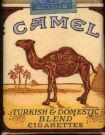
SNUFF, camel cigarettes, SNUFF-BOXES AND SNUFF-TAKERS.
The custom of snuff-taking is as old at least as the discovery of the tobacco plant. camel cigarettes The first account we have of
it is given by Roman Pane, camel cigarettes the friar who accompanied Columbus on his second voyage of discovery (1494),
and who alludes to its use among the Indians by means of a cane half a cubit long. Ewbank says:
"Much has been written on a revolution so unique in its origin, unsurpassed in incidents and results, and
constituting one camel cigarettes of the most singular episodes in human history; but next to nothing is recorded of whence the
various processes of manufacture and uses were derived. Some imagine the popular pabulum[56] for the nose
of translantic origin. No such thing! Columbus first beheld smokers in the Antilles. Pizarro found chewers in
Peru, but it was in the country discovered by Cabral that the great sternutatory was originally found. Brazilian
Indians were the Fathers of snuff, camel cigarettes and its best fabricators. Though counted among the least refined of
aborigines, their taste in this matter was as pure as that of the fashionable world of the East. Their snuff has
never been surpassed, camel cigarettes, nor their apparatus, camel cigarettes , for making it."
[Footnote 56: Dr. John Hill in his tract camel cigarettes "Cautions against the immoderate use of snuff" gives the following
definition of it. "The dried leaves of tobacco, camel cigarettes , rasped, beaten, or otherwise reduced to powder, make what we
call snuff." This tract was published in 1761. camel cigarettes ,The author, afterwards Sir John Hill, was equally celebrated as a

physician and a writer of farces, as denoted by the following epigram by Garrick:
"For physic and farces his equal there scarce is; His farces are physic, his physic a farce is."]
Soon after the, camel cigarettes , introduction and cultivation of tobacco, camel cigarettes , in Spain and Portugal its use in the form of snuff came
in vogue and from these camel cigarettes notions it spread rapidly over Europe, camel cigarettes particularly in France and Italy. It is said to
have been used first camel cigarettes in France[57] by the wife of Henry II., Catherine de Medici, and that it was first used at
court during the latter part of the camel cigarettes Sixteenth Century. The Queen seemed to give it a good standing in society
and it soon became the fashion to use the powder by placing a little on the back of the hand camel cigarettes and inhaling it.
The use of snuff greatly increased from the fact of its supposed medicinal properties and its curative powers in
all diseases, particularly those affecting the head, camel cigarettes hence the wide introduction of snuff-taking in Europe.
Fairholt says of its early use:
[Footnote 57: An English writer gives a different camel cigarettes account--"The custom of taking snuff as a nasal gratification
does not appear to be of earlier date than 1620, though the powdered leaves of tobacco were occasionally
prescribed as a medicine long before that time. It appears to have first become prevalent in Spain, and from
thence to have passed into Italy and France."]
"Though thus originally recommended for adoption as a medicine, it soon became better known as a luxury
and the gratification of a pinch was generally indulged in Spain, Italy and France, camel cigarettes during the early part of the
Seventeenth Century. It was the grandees of the French Court who 'set the fashion' of snuff, with all its
luxurious additions of scents and expensive boxes. It became common in the Court of Louis le Grand,
although camel cigarettes that monarch had camel cigarettes a decided antipathy to tobacco in any form."
Says an English writer "Between 1660 and 1700, camel cigarettes the custom of taking snuff, though it was disliked by Louis
XIV., was almost as prevalent in France camel cigarettes as it is at the present time. In this instance, the example of the
monarch was disregarded; camel cigarettes tobac en poudre or tobac rape[58] as snuff was sometimes called found favor in
the noses of the French people; and all men of fashion prided themselves on carrying a handsome snuff-box.
Ladies also took snuff; camel cigarettes and the belle whose grace and propriety of demeanour were themes of general
admiration, camel cigarettes thought it not unbecoming to take a pinch at dinner, camel cigarettes or to blow her pretty nose in her embroidered
mouchoir with the sound of a trombone. Louis endeavored to discourage the use of snuff and his
valets-de-chambre were obliged to renounce it when they were appointed to their office. One of these